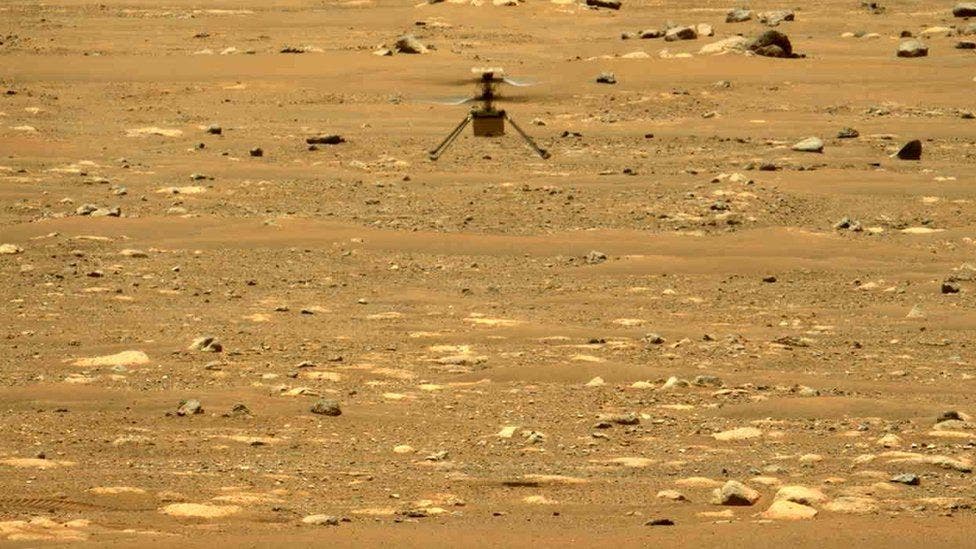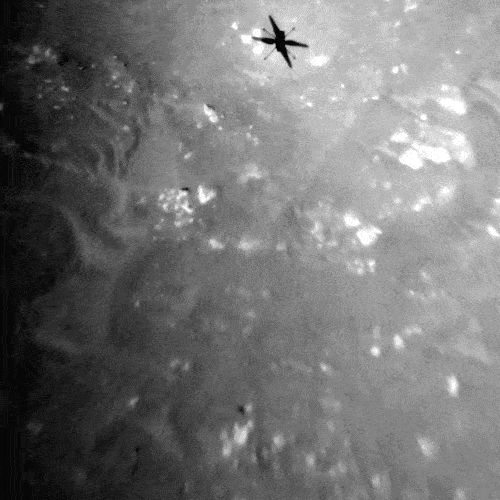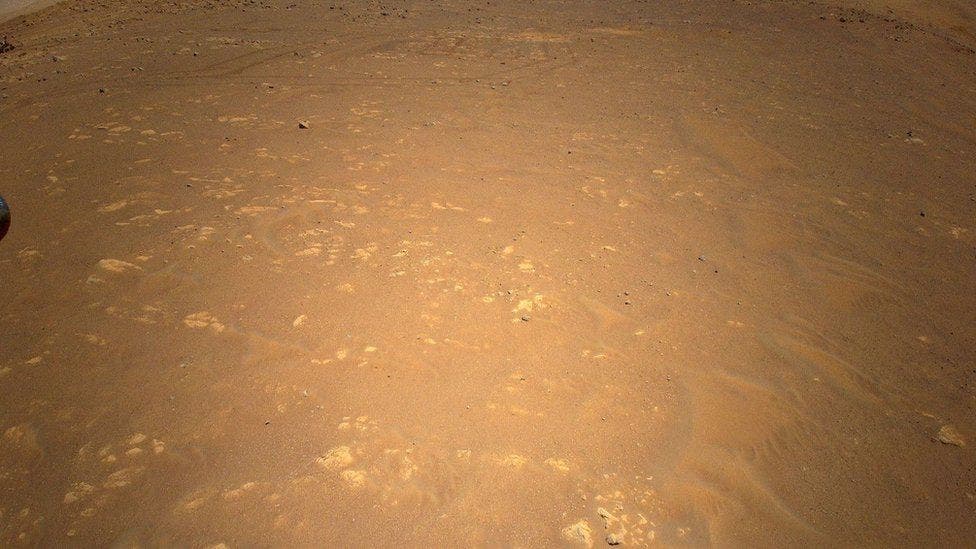After becoming the first man-made object to fly on another planet and making history in the process, the Ingenuity helicopter has completed its initial objectives. But now, NASA wants to make it work even more, with its mission shifting from a “technology demonstrator” to an “operations demonstration” phase.

Two weeks ago, NASA had its “Wright brothers” moment on Mars, when a small helicopter weighting less than 4 pounds (1.8 kilograms) was able to fly autonomously. Light enough to take flight in Mars’ rarefied atmosphere but strong enough to withstand landing tucked beneath the Perseverance rover, the Ingenuity helicopter was able to take off and land safely with minimal commands from Earth.
The helicopter has now carried out four flights, demonstrating that it is indeed possible to fly on other planets (even those with a thin atmosphere such as Mars), and future explorers or settlers could rely on flying drones for help.
“Future Mars exploration missions can now confidently consider the added capability an aerial exploration may bring to a science mission,” Lori Glaze, director of NASA’s Planetary Science Division, said in a statement Wednesday (April 28).
Its fourth flight was the most ambitious one: a 266-meter (872-feet) round trip, during which the helicopter snapped 60 black-and-white images and 5 color images. With this, Ingenuity has accomplished all its initial goals — but this doesn’t mean the mission’s over.
In fact, NASA has confirmed two more flights, noting that the helicopter will fly farther and faster than ever before.
Ingenuity was only meant to be a proof of concept, a technical demonstration, but since everything worked so well (and the area around the rover-helicopter duo is so interesting), a new stage of the mission will now commence.
Unlike the round trip flights it’s been carrying out so far, Ingenuity will now assist the Perseverance rover with one-way trips, scouting terrain and helping the rover look for signs of life. This will mean pushing the helicopter to its limits, and the likelihood of a problem happening grows with each flight — especially when it comes to landing.
“We will now be flying over unsurveyed terrains and transfer to airfields that are not well characterized so there’s a higher probability of a bad landing,” explained MiMi Aung, Ingenuity’s project manager.
“We will be celebrating each day that ingenuity survives and operates beyond the original window.”

Ingenuity and Perseverance will soon start investigating Jezero Crater, a clay-covered crater that researchers believe was once a lake, and is, therefore, a prime candidate to have hosted microbial life during this time. The plan is for Ingenuity to survey the ground and Perseverance to gather and analyze samples, looking for evidence of biological life — either past or present.
Ingenuity’s fifth flight will be the first one which is not a return trip. From its new destination, it will make two more flights during the next 30 Martian days (or sols). If everything goes according to plan, its mission may be extended even more.
It’s not uncommon for NASA to extend missions beyond what was initially planned — in fact, it’s become the norm. The Opportunity Rover was first designed for three months of projects, but it ran for 15 years. The Hubble Telescope and the International Space Station both ran far longer than was planned — and now, the Ingenuity chopper will enter the select club of overperforming NASA instruments.
“The Ingenuity technology demonstration has been a resounding success,” said Thomas Zurbuchen, associate administrator for NASA’s Science Mission Directorate. “Since Ingenuity remains in excellent health, we plan to use it to benefit future aerial platforms while prioritizing and moving forward with the Perseverance rover team’s near-term science goals.”

Ingenuity carries a piece of fabric from the wing of the 1903 Wright Flyer, the Wright Brothers’ airplane, which was humanity’s first controlled powered heavier than air flight on Earth. The take-off and landing area for Ingenuity has been named Wright Brothers Field as a tribute.






